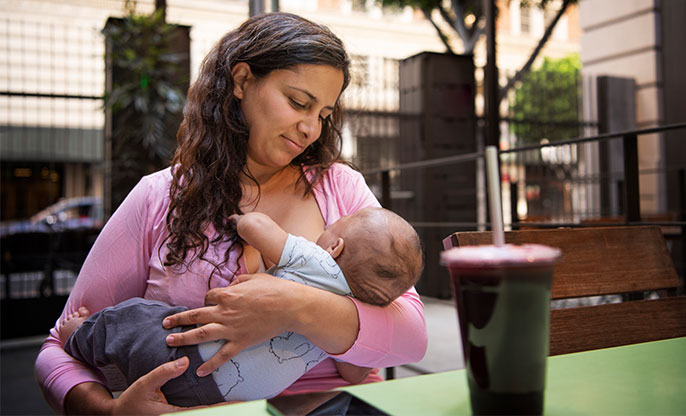
NIPPLE CONFUSION; SYMPTOMS & SOLUTIONS
All babies are born with a natural instinct to breastfeed. However, if bottles are introduced too soon in a baby’s life, switching back from the easiness of the bottle to the mother’s nipple where more effort is required confuses the baby; termed as nipple confusion.
Bottle feeding v/s breastfeeding
The mechanisms of breastfeeding and bottle feeding are quite different. At the breast, a baby has to open its mouth wider and latch on to the areola, creating suction and sucking and pulling the milk down to the nipple and into its mouth using its tongue and jaw. It can take about a minute for the milk to start flowing.
Bottle feeding on the other hand does not require a baby to open its mouth as wide. Gravity and the flow from the bottle mean that the baby just need to clamp its jaws down on the nipple and suck. It requires much less effort and time.
Symptoms
Your baby gets fussy at the breast.
Your baby’s latch at the breast suddenly takes a turn for the worse and you have sore nipples because it latches on to your nipple instead of the areola.
Your baby thrusts its tongue upwards while nursing and pushes the nipple out.
Your baby is not opening its mouth wide enough to breastfeed.
Your baby refuses to breastfeed.
How to avoid nipple confusion?
Make it clear in your birth plan that you do not want your baby to be offered bottles or pacifiers at the hospital or birthing centre.
Avoid bottles at least till breastfeeding is well established (about 4 weeks).
If you are having breastfeeding issues, instead of immediately switching to bottles, try a Supplemental Nursing System (SNS) so that your baby is still close to you while feeding. At the same time, make sure you get breastfeeding support from a certified Lactation Consultant.
Dealing with nipple confusion - If your baby is displaying signs of nipple confusion, here are some solutions you can try:
Indulge in lots of skin-to-skin contact with your baby.
Ensure the breastfeeding position is correct; tummy-to-mummy & nose-to-nipple.
Try to breastfeed while your baby is hungry. Don’t wait till he/she gets fussy and begins to starve. Keep an eye-out for hunger cues; sucking of the fist & fingers.
Try expressing a little milk before breastfeeding; it’s an incentive for your baby to latch on.














